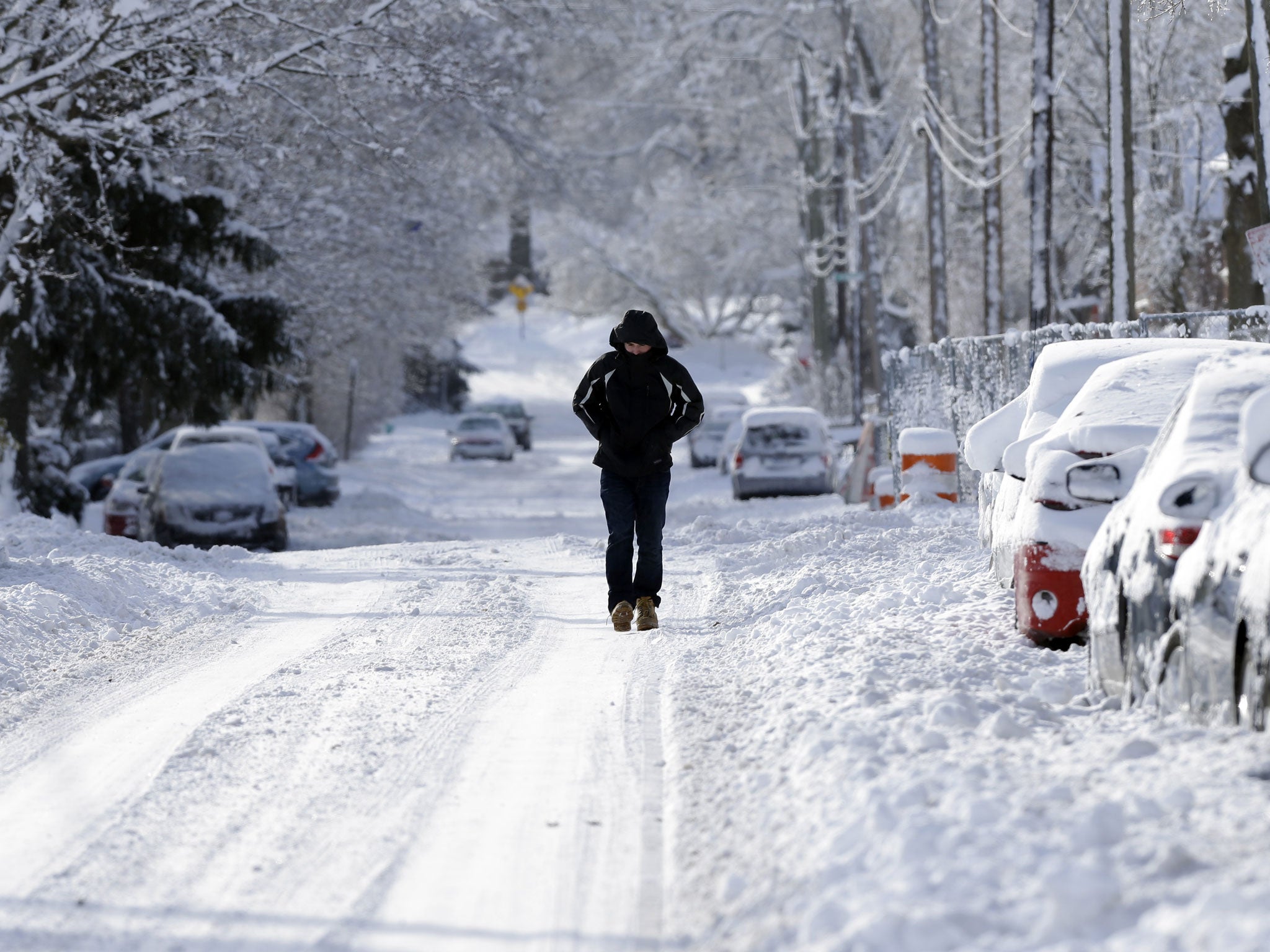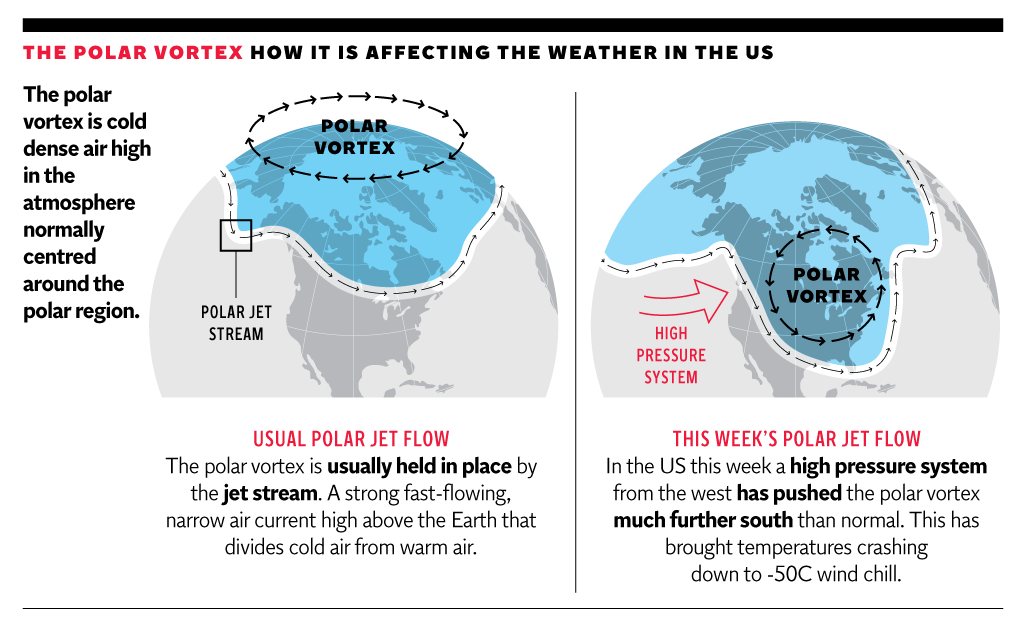What is a polar vortex? The arctic winds that brought cold air and chaos to the US

Much of the United States is currently in the grip of a polar vortex, a system of dense air producing plummeting temperatures and swathes of freezing weather, bringing some parts of the country to a halt and causing chaos in others.
A polar vortex is a circulating pattern of strong winds flowing around a low-pressure system, which normally sits over the Arctic during winter. The effect of such a vortex is to keep the cold air circulating within the polar region.
However, when the vortex breaks down or splits into two, it can send very cold air further south.
The weather conditions produced by this polar vortex have been so severe that even polar bears at the Lincoln Park zoo in Chicago were brought inside as the weather dropped to a record low of -26C, CNN have reported. Residents have been warned their skin may freeze if they leave their homes when wind chills plummeted to -53C.
Chicago's National Weather Service office reported that Monday's low of -26C at O'Hare International Airport beat a record set in 1884 and equalled in 1988. In Fargo, the largest city in North Dakota, temperatures sank below - 35C.

Forecasters predict 187 million people could feel the effects of the "polar vortex" by the time it spreads across the country. At least 13 people are thought to have died as a result of the extreme conditions already, including several road accidents, a man who succumbed to hypothermia in Wisconsin, and a worker crushed by a massive pile of road salt at a storage facility in Philadelphia.
The weather conditions produced in the polar vortex could also make temperatures drop to the coldest on record in the 21st century. The National Weather Service predicts temperatures will be 25 to 35 degrees below average for the Mid-Atlantic, Southeast to the Ohio, Tennessee Valleys and into the Upper Midwest today.
Some scientists believe that warmer-than-average conditions in the Arctic can weaken the polar vortex, so causing colder-than-average conditions at lower latitudes. They think this could help to explain the extreme conditions of the 2009-2010 winter when the normal pattern of Arctic winds broke down causing a weakened polar vortex to allow a frigid body of air to move south. This brought record snow conditions to northern Europe, eastern Asia and eastern North America.

Polar vortices tend to strengthen in the winter and weaken in the summer and can span a distance of more than 1,200 miles, with the air circulating in an anti-clockwise fashion around the North Pole.
A polar vortex also occurs around Antarctica, and is a key feature of the winter weather of the southern hemisphere that results in the conditions necessary for the depletion of atmospheric ozone.
Read more:
Join our commenting forum
Join thought-provoking conversations, follow other Independent readers and see their replies
Comments